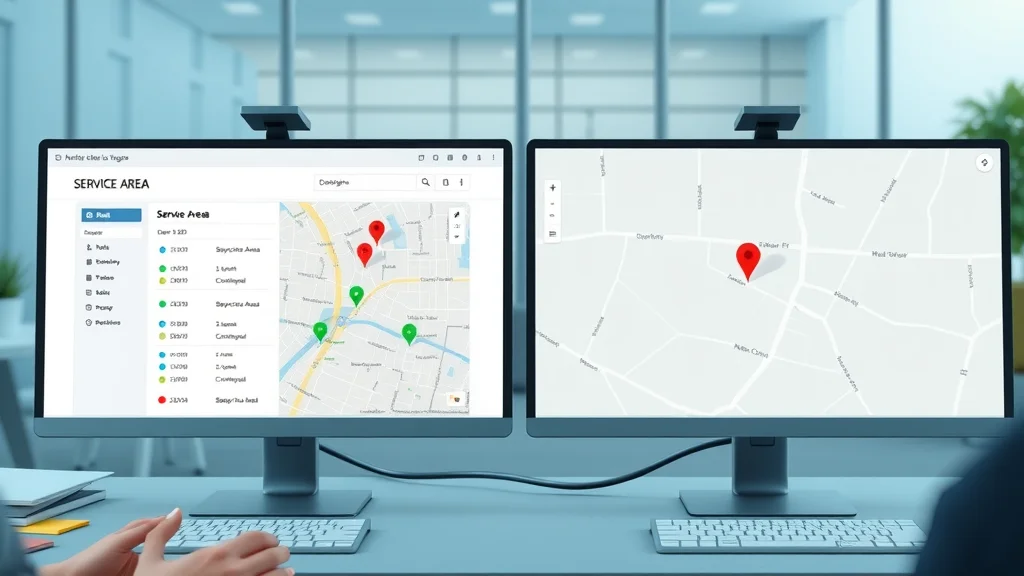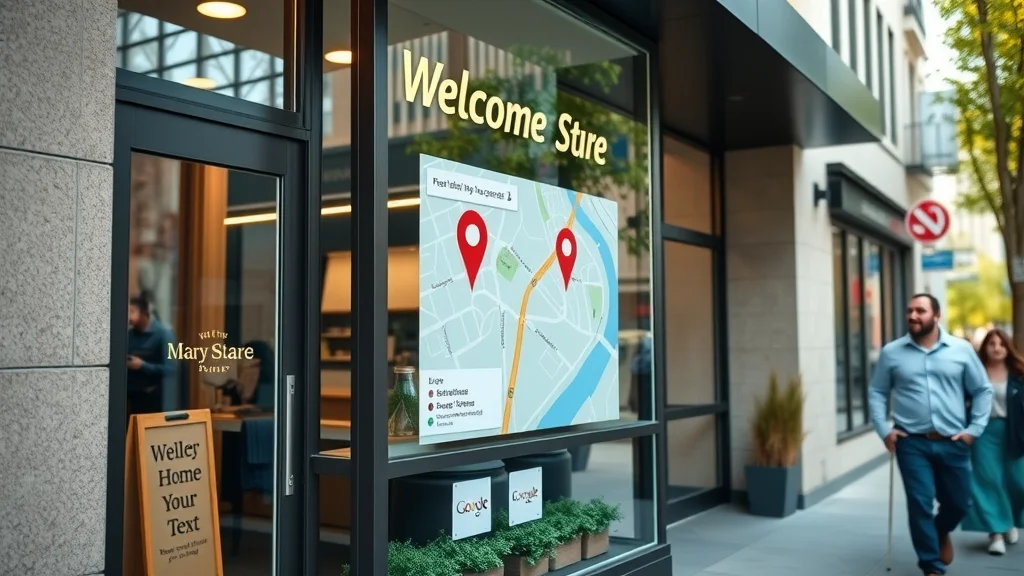Did you know? Businesses that use service area pages SEO see an average increase of 40% in local search visibility—often outshining their competitors and capturing more local leads than ever before. This little-known SEO tactic might be the game-changer your business needs to dominate local search results.
Why Service Area Pages SEO are Critical for Local SEO Success
"A well-optimized service area page can boost local search visibility by more than 40%." – Industry Expert
Service area pages SEO is the backbone of successful local SEO for countless businesses without a single physical address or those serving multiple locations. By tailoring web content to specific neighborhoods, suburbs, or cities, service area businesses can connect with potential customers exactly when and where they’re searching. Instead of relying on a single location page, businesses can create a web of area pages—each targeting unique local keywords and search intents, ensuring high relevance within their service area.
This approach isn’t just theory. Local search algorithms increasingly factor in geo-relevant content. When someone searches for a service area business (“plumber near [city]”), Google’s search results often favor pages that match a user’s intent by naming the specific city, zip code, or service area. In practice, this means that optimized service area pages can multiply your exposure in Google Maps, Google Business Profiles, and organic search—delivering more local leads.
Understanding the Power of Service Area Pages in Local SEO
Service area pages are like digital “welcome mats” for each locality you serve. By dedicating a page to each area you cover, you’re telling search engines and potential customers alike: “Yes, we work in your neighborhood.” This precision not only builds trust but boosts your relevance in local search. Local SEO experts agree—generic landing pages can’t match the geo-targeted reach and conversion potential of focused service area pages.
Ultimately, it’s about putting your business in front of the right eyes. When users see their specific town or region named on your page, your business feels local and accessible, increasing the likelihood of conversion and positive search results positioning.

The Startling Impact of Area Pages on Local Search Rankings
It’s no longer enough to have a single “Service Locations” page. Google validates the depth and accuracy of your business coverage through the specificity of your content. Businesses with multiple, well-crafted area pages consistently outrank those with broad, generic location pages, resulting in higher impressions, clicks, and customer calls. When you combine local keyword optimization, reviews, and localized offers, service area pages become magnets for local searchers.
Not only do these area pages help you rank in Google's main search, but they also energize your visibility on Google Maps and within the coveted “Map Pack.” For many competitive industries and markets, this difference can represent thousands of dollars in monthly revenue shifts, making service area pages a high-ROI move in any local SEO strategy.
Statistical Overview: How Service Area Pages Outperform Generic Location Pages
Data consistently shows that businesses utilizing targeted service area pages command higher rankings and traffic compared to single-page location strategies. Let’s examine how the two approaches stack up against each other based on recent case studies and industry benchmarks.
| Metric | Service Area Pages | Location Pages |
|---|---|---|
| Average Local Keyword Rankings | Top 3–5 positions | 6–10 positions |
| Google Business Profile Impressions | +60% increase | +15% increase |
| Monthly Local Leads | Up to 85% more | Baseline |
| Click-Through Rate (CTR) | 7–14% | 3–5% |
What You'll Learn About Service Area Pages SEO
- The fundamentals of service area pages SEO
- How service area pages help service area businesses capture local search
- Best practices for creating impactful area pages
- How to optimize business profiles and Google Business Profiles via service area content
- Key metrics and tracking methods for local SEO success
What are Service Area Pages?
Defining Service Area Pages for Local SEO
Service area pages are specialized web pages designed to target individual locales or regions within your business’s overall service area. Instead of focusing on a brick-and-mortar physical location, these pages communicate to both users and search engines the exact areas your service area business covers—be it neighborhoods, cities, zip codes, or even counties. Each page typically contains geo-targeted information, area-specific testimonials, detailed service offerings, and a clear call to action tailored to residents of that area.
This effective approach allows service area businesses to “go local” online, catering to potential customers searching for solutions in their own community without requiring a separate physical office or address for each area covered. By clarifying your service radius online, you’re giving Google and other search engines the strong location signals they look for to boost your presence in local search results.
Difference Between Service Area Pages and Location Pages
Though often confused, a service area page is not the same as a traditional location page. A location page highlights a business’s brick-and-mortar address, business hours, and other physical contact details—best for retailers, restaurants, or offices. In contrast, a service area page focuses on the regions where your business provides services, not necessarily where you’re physically based.
Service area pages are ideal for plumbers, home cleaners, HVAC techs, and other service area businesses whose value lies in their willingness to travel to a customer’s home or office, rather than waiting for customers at a set address. A well-designed site will often combine both: location pages for staffed premises and service area pages for mobile reach, ensuring all local search intents are satisfied.

Service Area Page vs Landing Page: What Business Owners Must Know
While a landing page is built for conversion around a single offer or campaign, a service area page is highly localized and supports the ongoing visibility and trust factors for local searches. Ideally, each service area page will also function as a landing page by presenting compelling calls to action, but its primary goal is to establish relevance within a specific geographic zone for local SEO.
Business owners who confuse the two often miss local opportunities. By blending persuasive, location-specific content with the robust design elements of modern landing pages (fast load times, clear CTAs, and localized trust signals), you maximize both search visibility and conversion potential—resulting in more calls and leads from your best-fit local customers.
The Strategic Role of Service Area Pages SEO in Local Search
How Service Area Businesses Leverage Area Pages for Google Maps and Google Search
Local businesses that operate beyond a single storefront—think plumbers, electricians, mobile pet groomers, or roofers—depend on being found in the exact towns or zip codes their ideal customers live. Service area pages SEO equips these businesses to “claim” their territory both in Google Maps results and classic Google Search. By building a dedicated page for each area, you supply search engines with tailored content and geography-specific signals, helping your business profile appear more frequently in map packs and local listings.
By embedding Google Maps, providing detailed descriptions of local services, and including regionally tuned calls to action (like using a local phone number), service area businesses ensure their area pages outperform generic location pages. This direct approach increases the number of potential customers discovering, trusting, and contacting your business from local searches or while navigating maps on their mobile devices.

Building Hierarchical Site Structures with Area Pages
A strong area page strategy goes beyond separate pages—it’s about creating a hierarchy that search engines love. Start by dividing your overall service area into primary and secondary locales: regions, cities, and neighborhoods. Use internal links to nest these service area pages under parent categories (“Service Areas,” “Cities We Serve”), then link back and forth using relevant local keywords. This structure helps Google understand the relationship between pages, boosts crawlability, and distributes local SEO authority throughout your site.
When executed thoughtfully, this hierarchy turns your site into a robust local hub, making it nearly impossible for competitors relying on single location pages or generic content to keep up. Plus, it improves user experience, helping potential customers quickly see if you serve their area, increasing the trust and engagement needed to convert clicks into contacts or sales.
Core Elements of High-Performing Service Area Pages SEO
Targeting Local Keywords in Service Area Pages
To win at local SEO, your service area pages must target high-intent local keywords. These keywords combine your core services with the specific name of the city, neighborhood, or region (“reliable plumber in Downtown Austin” or “emergency HVAC repair Boulder CO”). Research keywords with solid search volume and buyer intent for each of your key service areas. Use these phrases naturally in headings, introductory text, services lists, image alt text, and your CTA.
Balancing keyword optimization with natural readability is crucial—overstuffing can harm SEO efforts. Instead, focus on authenticity: What would a real customer in that area search for? Use tools like Google Keyword Planner or SEMrush to validate search demand and further refine your targeting. The outcome: your service area pages show up when real, local customers have immediate service needs.
Including Service Area Details & Clear Service Offerings
Every service area page should specify the regions covered, typically by listing neighborhoods, zip codes, or nearby landmarks. Go beyond a “yes, we serve here” to paint a picture of your unique experience or customer stories from that area. This clarity—coupled with detailed explanations of your services—shows search engines and users that your business is genuinely integrated into the community.
Include tailored descriptions showing what differentiates your service for residents in that locale. Testimonials from local clients, service-specific photos, and even Google Maps snippets make the content uniquely relevant for both readers and search engine crawlers. Ultimately, the more locally authoritative your page appears, the higher it will climb in local search results.
Incorporating Google Business Profile Information and Maps
Integrating your Google Business Profile, phone number, hours, and address (if relevant) reinforces trust and ensures citation consistency. Embed a Google Map tailored to the area, not just your physical location—users are much more likely to click and interact when they instantly recognize landmarks or familiar street names on the map embed.
Highlight unique reviews and star ratings from customers within that service area, or even display user-submitted photos that capture your business in action nearby. By making each area page feel “hyper-local,” you increase trust signals to Google and encourage users to engage with your business directly through your area page.

User Experience (UX) Considerations for Service Area Pages
Simple navigation, fast load times, and mobile-friendly design are non-negotiables for high-performing area pages. Make it effortless for potential customers to find out if you serve their area and to contact you immediately, whether they’re searching on desktop or mobile. Prominent calls to action, clickable phone numbers, interactive maps, and service menus all boost conversions and keep bounce rates low.
Modern site builders let you add review carousels, service-specific FAQs, and local imagery—these extra touches reassure visitors that you’re the established local expert for their needs. Optimizing for user experience simultaneously supports your SEO ranking by reducing page abandonment and signaling engagement value to Google and other search engines.
What is the 80/20 Rule for SEO?
Applying the 80/20 Principle to Service Area Pages SEO
The 80/20 rule (the Pareto Principle) states that 80% of your results often come from just 20% of your efforts. In local SEO, this means that a handful of your service area pages will bring in the lion’s share of high-value local leads. Focus your initial optimization and updates on your most profitable or populous target areas—where ranking improvements translate directly into more business.
Regular analytics reviews help you identify which locations (and related local keywords) yield the most traffic, conversions, and phone calls. By fine-tuning those top-performing pages—updating reviews, adding new images, and refreshing content—you maximize ROI without spreading your SEO resources too thin across underperforming areas.

Which Service Area Pages Offer the Greatest ROI?
"Focus on the 20% of service areas that bring in 80% of your local leads."
The area pages that generate the most leads tend to be those for the largest suburbs, wealthiest neighborhoods, or regions where competition is lower. Continually monitor analytics for click-through rate, page engagement, and conversion activity—don’t be afraid to retire or merge underperforming pages to keep your site lean and effective. The smartest service area businesses adapt their site to reflect where real demand lives, ensuring that their SEO efforts always translate into meaningful business growth.
What are the 3 C's of SEO and How Do They Apply to Service Area Pages SEO?
Content: Crafting Unique and Localized Area Page Content
Original, localized content is the cornerstone of service area pages SEO. Share unique stories, local customer testimonials, and personalized service descriptions that prove your expertise in each target region. Avoid duplicate content at all costs—a tailored page for “Plumbing in Parker, CO” should read much differently than one for “Plumbing in Aurora, CO,” even if the core services are the same.
This approach not only delights potential customers but also signals to search engines that your business is active and engaged in each community. Remember, great content means more than keyword stuffing—it’s about relevance, value, and authenticity for the reader in that area.
Code: Technical SEO Essentials for Service Area Pages
Behind every successful area page is sound technical SEO. Ensure your pages load quickly, are mobile-friendly, and use proper heading tags for local keywords. Use structured data (schema markup) to help search engines understand your service type, service areas, and business details—this can even earn you visibility in featured snippets or map packs.
Additionally, optimize your XML sitemaps and internal link structures to show Google how your area pages relate to each other and the main service categories. Technical best practices are invisible to users but essential for keeping your site indexable and competitive in local search.
Credibility: Building Trust with Customer Reviews and Business Profile Enhancements
Trust is everything in local SEO. Feature customer reviews (especially with location references), display your Google Business Profile details, and showcase certifications or local awards on each service area page. This builds credibility both for human visitors and search engines, making your area pages the top choice in any local search.
Continually update reviews and keep your Google Business info (address, phone number, hours) in sync with your website to avoid trust-destroying discrepancies that can knock you down in local rankings. The more you validate your expertise and authentic presence in a given area, the more search engines will feature your business in the most valuable search results.
Best Practices for Service Area Page SEO Optimization
- Local keyword targeting on each area page
- Optimizing business profiles and Google Maps embeds
- Adding location-specific testimonials and reviews
- Using schema markup for service area businesses
What is a Service Page on a Website?
How Service Pages Differ from Service Area Pages in SEO
A service page focuses on what you offer (e.g., “HVAC Repair Services” or “Custom Landscaping”). The difference is that a service area page focuses on where you offer it (“HVAC Repair in Broomfield” or “Landscaping in Castle Rock”). The two work hand-in-hand, guiding customers from general inquiries to highly relevant, local solutions.
For true local SEO impact, your website should showcase both: thoroughly outlining each major service on its own page while also building separate area pages that bring those specific offerings to life for every neighborhood you cover. This dual approach satisfies both search engines and the human desire for clearly localized, relevant information.
Integrating Service and Area Pages for Maximum Local Reach
Smart site structures combine broad service pages as “hubs” with interlinked service area pages as “spokes.” When visitors land on your main HVAC or plumbing page, clear links direct them to regionally focused area pages—each answering “Do you serve my area?” While each area page offers local trust-building details and your core promise, every route on your website leads back to conversion: call, text, email, or form fill.
This connectivity not only creates a superior user experience, but also channels local SEO authority throughout your entire site, increasing the chances your business appears in every relevant local search.
Real-World Examples of Service Area Pages SEO Driving Local Search Growth
"After launching dedicated area pages, our Google Business Profile impressions increased by 60%." – Local Business Owner
| Service Area | Impressions (Before) | Impressions (After) | Qualified Leads | Conversion Rate |
|---|---|---|---|---|
| Northwest Suburb | 1,500 | 2,800 | 150 | 12% |
| Downtown Metro | 2,100 | 3,950 | 230 | 15% |
| South Side | 900 | 2,100 | 90 | 9% |
Watch a step-by-step walkthrough showing how to build, optimize, and publish a local business service area page using website builder tools, Google Business Profile integration, and on-page SEO best practices.
Insights from a local SEO professional on how optimized service area pages drive measurable local search growth.
Maintaining and Updating Service Area Pages for Optimal SEO
Tracking Local SEO Performance with Analytics
Set up tracking for key actions on each area page: form submissions, calls, map clicks, and conversions. Use Google Analytics, Google Search Console, and maps integration data to monitor keyword rankings, impressions, and user engagement. Review these metrics monthly—your local SEO success depends on understanding which area pages are turning clicks into customers and which need further optimization.

When and How to Expand Your Service Area Pages
If you notice growing demand or increased search volume in a new locality, consider adding a new service area page. Research local competitors, fine-tune your local keywords, and launch with original, hyper-local content as you would for your existing service areas. Don’t add dozens at once—build and track a few pages at a time, adjusting your approach based on real-world search data and conversion rates.
Keep your site lean by deleting or merging underperforming pages and always update area details as your service area evolves. Continuous refinement ensures your business remains the most trusted and findable option for new and established neighborhoods alike.
Key Takeaways for Service Area Pages SEO
- Service area pages are a foundational tactic for local SEO
- Tailoring pages for each area maximizes local search relevance
- Continuous updates and monitoring fuel long-term SEO growth
FAQs: Service Area Pages SEO
-
How many service area pages should I create?
Focus on the 20% of areas responsible for most of your business (see the 80/20 rule). Start with your top-performing neighborhoods or cities, monitor their results, and expand as justified by demand and available resources. -
Can service area pages help my Google Business Profile rank?
Yes. Well-optimized service area pages strengthen your Google Business Profile’s relevance for map and local search queries by providing extra local context and trust factors for search engines. -
Is duplicate content a concern for area pages?
Absolutely. Each area page must feature unique, original content specific to that neighborhood or city. Avoid copying and pasting—Google penalizes duplicate area pages. -
Should I include city or neighborhood names in each service area page?
Yes. Always weave target city or neighborhood names into your headlines, copy, testimonials, and image alt text for the best local SEO results. -
How do I measure the success of my service area pages?
Track impressions, click-through rates, calls, form submissions, and conversion rates for each area page using analytics tools and call tracking platforms.
People Also Ask About Service Area Pages SEO
What are service area pages?
Service area pages are dedicated web pages that describe the specific regions or neighborhoods your business serves. They help boost your visibility in local searches and connect you with customers looking for services in their immediate area, even if you don’t have a physical location there.
What is the 80/20 rule for SEO?
The 80/20 rule suggests that about 80% of your local SEO results will come from 20% of your most effective service area pages. Focus on optimizing your highest performing pages before expanding to new service areas.
What are the 3 C's of SEO?
The three C’s of SEO—Content, Code, and Credibility—apply directly to service area pages: create unique, local content; ensure technically sound, optimized code; and build credibility with reviews and up-to-date business profiles.
What is a service page on a website?
A service page outlines the specific services your business provides. Unlike area pages, which target geographic areas, service pages focus on what you do and why customers should choose you for that specific service.
Ready to Win Local Search? Book a Free Consultation or text Us 720.892.5968
Conclusion: Harness the Full Power of Service Area Pages SEO
Service area pages SEO gives you the edge for dominating local search—optimize, monitor, and expand to become the #1 choice in every community you serve.
 Add Row
Add Row  Add
Add 




Write A Comment